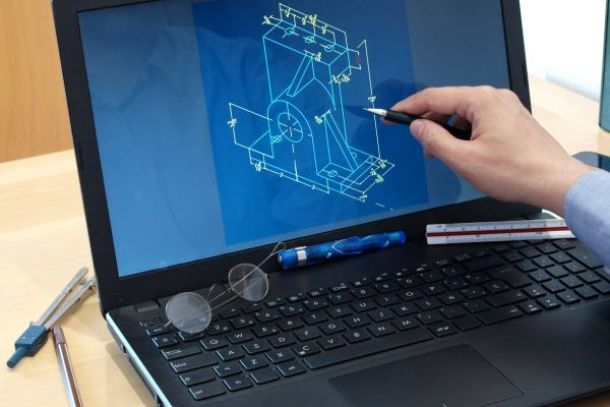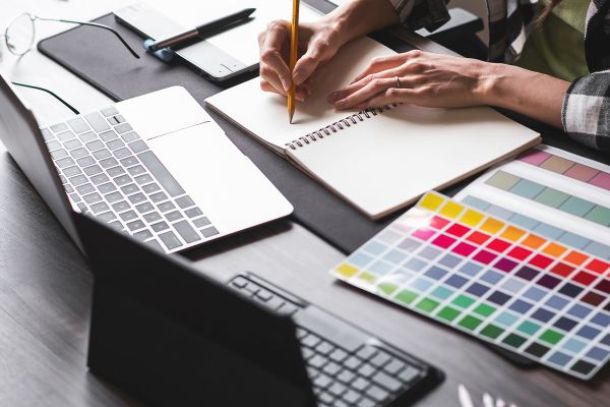Understanding the Psychology of Design: How Colors and Shapes Influence Perception
Understanding the Psychology of Design: How Colors and Shapes Influence Perception
Design is more than just aesthetics; it’s a powerful tool that can influence human perception, emotions, and behavior. At the core of effective design lies an understanding of psychology—how the brain interprets visual stimuli and how certain colors and shapes can evoke specific responses. In this article, we’ll delve into the psychology of design, exploring how colors and shapes impact perception and how designers can harness these elements to create compelling and persuasive visual experiences.
The Power of Color in Design
Color is one of the most potent elements in design, capable of evoking emotions, creating associations, and influencing decisions. The psychological effects of color are deeply rooted in human experience and cultural symbolism, making it a critical factor in how we perceive and respond to visual stimuli.
The Psychological Impact of Colors
Different colors have different psychological effects, and understanding these can help designers choose the right palette for their projects.
- Red: Red is a color of energy, passion, and urgency. It grabs attention and can evoke strong emotions, making it ideal for calls to action, sales promotions, and anything that requires immediate attention. However, red can also signify danger or warning, so it should be used carefully.
- Blue: Blue is associated with trust, calmness, and professionalism. It’s often used by financial institutions, tech companies, and healthcare providers to convey reliability and stability. Light blues can create a sense of serenity, while darker blues evoke strength and authority.
- Yellow: Yellow is a color of optimism, warmth, and happiness. It’s attention-grabbing but can be overwhelming if overused. Yellow is often used in designs meant to evoke cheerfulness or to highlight important information.
- Green: Green represents growth, health, and nature. It’s commonly used in designs related to the environment, wellness, and finance. Dark greens are associated with wealth and stability, while lighter greens suggest freshness and vitality.
- Purple: Purple combines the stability of blue and the energy of red, often associated with luxury, creativity, and spirituality. It’s a color that evokes sophistication and is frequently used in beauty products and high-end brands.
- Black: Black is a color of power, elegance, and sophistication. It’s used in luxury branding and to create contrast in design. However, black can also evoke feelings of mourning or fear, depending on the context.
- White: White signifies purity, simplicity, and cleanliness. It’s often used in minimalist designs and as a background to make other colors stand out. White space is also crucial in design for creating balance and focus.
- Orange: Orange combines the energy of red and the cheerfulness of yellow. It’s a playful, vibrant color that can evoke enthusiasm and creativity. It’s often used in designs that aim to appeal to a younger audience or to create a sense of fun.
- Gray: Gray is a neutral, balanced color that conveys professionalism and formality. It’s often used in corporate designs and can be paired with brighter colors to create a modern, sleek look.
Cultural and Contextual Considerations
While the psychological effects of color are powerful, they are not universal. Cultural differences can significantly impact how colors are perceived. For example, while white is associated with purity in Western cultures, it’s often linked to mourning in some Eastern cultures. Similarly, red can symbolize luck and prosperity in China but may evoke feelings of danger in Western contexts.
Designers must consider the cultural and contextual implications of color choices, especially when designing for a global audience. Conducting research and testing designs with diverse focus groups can help ensure that color choices resonate with the intended audience.
The Role of Shapes in Design
Just as colors influence perception, shapes also play a crucial role in how we interpret visual information. Shapes can convey meaning, evoke emotions, and guide the viewer’s eye through a design. Understanding the psychology of shapes allows designers to create compositions that communicate effectively and resonate with their audience.
The Psychological Impact of Shapes
Different shapes have different connotations and can influence the way a design is perceived.
- Circles: Circles are associated with unity, wholeness, and infinity. They have no beginning or end, which gives them a sense of completeness and harmony. Circles are often used to represent community, protection, and continuity. In design, circles can create a feeling of softness and approachability.
- Squares and Rectangles: Squares and rectangles represent stability, order, and reliability. Their straight lines and right angles convey a sense of structure and organization. These shapes are commonly used in corporate and financial designs to suggest professionalism and trustworthiness. However, they can also feel rigid or conservative if overused.
- Triangles: Triangles are dynamic shapes that can convey direction, movement, and tension. The orientation of the triangle can significantly affect its meaning—an upward-pointing triangle suggests strength and power, while a downward-pointing triangle can evoke instability or caution. Triangles are often used in design to draw attention to a specific point or to create a sense of action.
- Lines: Lines are fundamental elements in design that can guide the viewer’s eye and create a sense of flow. Horizontal lines suggest calmness and stability, vertical lines convey strength and growth, and diagonal lines create a sense of movement and energy. The thickness, direction, and texture of lines can also influence their impact on perception.
- Curved Shapes: Curved shapes, such as ovals and ellipses, are associated with softness, femininity, and fluidity. They can create a sense of comfort and relaxation, making them ideal for designs that need to feel welcoming and gentle. Curved shapes are often used in designs related to wellness, beauty, and nature.
- Organic Shapes: Organic shapes are irregular, free-form shapes that mimic the natural world. They convey a sense of spontaneity, creativity, and authenticity. Organic shapes are often used in designs that aim to evoke a natural, earthy, or artisanal feel.
The Combination of Shapes and Colors
The combination of shapes and colors can amplify the psychological impact of a design. For example, a red circle can evoke urgency and action, while a blue square can suggest stability and trust. Designers can strategically pair shapes and colors to create compositions that resonate with the desired emotions and messages.
Understanding how different shapes and colors interact is essential for creating designs that are not only visually appealing but also effective in communicating the intended message.
Applying Color and Shape Psychology in Design
To harness the power of color and shape psychology, designers must approach their work with intention and awareness. Here are some practical tips for applying these principles in design:
Establish a Clear Objective
Before choosing colors and shapes, it’s essential to establish a clear objective for the design. What message do you want to convey? What emotions do you want to evoke? Understanding the purpose of the design will guide your decisions and help you choose the right elements.
Consider the Target Audience
Understanding your target audience is crucial for effective design. Consider the demographics, preferences, and cultural background of your audience when selecting colors and shapes. What resonates with one group may not have the same impact on another. Conducting audience research and testing designs with focus groups can help ensure that your choices align with the audience’s expectations and preferences.
Create Visual Hierarchy
Visual hierarchy is the arrangement of elements in a design to guide the viewer’s eye and highlight the most important information. Colors and shapes play a significant role in creating visual hierarchy. Use bold colors and dynamic shapes to draw attention to key elements, and use more subtle colors and shapes for secondary information.
For example, a bright red triangle might be used to highlight a call-to-action button, while a muted gray rectangle could serve as a background for less critical information.
Maintain Balance and Harmony
While it’s important to use colors and shapes strategically, it’s also crucial to maintain balance and harmony in your design. Too many contrasting colors or conflicting shapes can create visual chaos and overwhelm the viewer. Aim for a cohesive and harmonious composition that supports the overall message of the design.
Balance can be achieved through symmetry, proportional use of space, and careful selection of complementary colors and shapes.
Test and Iterate
Design is an iterative process, and it’s essential to test your designs to see how they resonate with your audience. A/B testing, user feedback, and analytics can provide valuable insights into how your design is perceived and how effective it is in achieving its goals. Be open to making adjustments based on feedback and continue refining your design until it meets the desired outcome.
Conclusion
The psychology of design is a fascinating and powerful tool that can significantly influence how people perceive and interact with visual content. By understanding the psychological effects of colors and shapes, designers can create compositions that not only look good but also communicate effectively and resonate with the audience on a deeper level.
Whether you’re designing a logo, a website, or a marketing campaign, applying the principles of color and shape psychology can help you create designs that are impactful, memorable, and aligned with the intended message. As you continue to explore the world of design, remember that the most effective designs are those that speak to both the mind and the emotions of the viewer.


